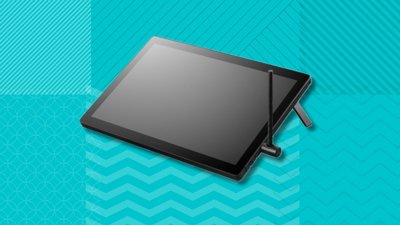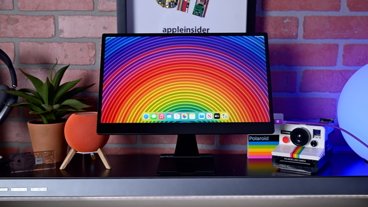Details about an unreleased MacBook Pro configuration have surfaced on Chinese social media, suggesting that Apple may have evaluated a version with the M3 Ultra chip.
The current 14-inch MacBook Pro and 16-inch MacBook Pro are available with Apple's M4 line of chips, including the M4, M4 Pro, and M4 Max. The same can be said for their M3 series counterparts, but a new leak suggests there may have been a fourth configuration planned.
On Friday, a post on the Chinese website BiliBili detailed a few scrapped iPhone, iPad, and Mac configurations. The post's author lists observations derived from the OS of a pre-production prototype of the iPhone 16.
Such devices can and often do contain references to unreleased hardware.
Among other things, the leak claims that early iOS 18 code references two unreleased MacBook Pro variants — J514d and J516d. Given that the M3 Pro and M3 Max versions of the MacBook Pro bear the device identifiers J514m and J516c, the existence of an M3 Ultra variant seems plausible.
The leaker notes that Apple's high-end Mac configurations use the "d" suffix to indicate the use of an "Ultra" chip. The M3 Ultra Mac Studio, for instance, is known within Apple as J575d, while the slightly weaker M4 Max variant uses the identifier J575c.
The M3 Ultra is currently one of Apple's most powerful chips. The system-on-chip supports up to 512GB of unified memory and can be configured with a 32-core CPU as well as an impressive 80-core GPU.
The Mac Studio is a desktop computer with a relatively massive heat sink and fan. As designed, a MacBook Pro with the same chip would likely face thermal or power consumption issues, similar to heat issues that late Intel models had.
Friday's leak notes that Apple abandoned its plans for a PowerBook G5 more than 20 years ago, because of similar problems.
We were not able to authenticate the strings in software. It may have been limited to some locales, and there's always the possibility that it's been faked.
Internal-use operating system variants for development devices typically include tests and files for multiple hardware variants, including development boards and experimental devices, as well as FPGAs.
Early builds of iOS 4, for instance, contained references to an unreleased iPhone with the device identifier N89, while internal distributions of iOS 8 contained files pertaining to a scrapped iPad Pro with Apple's A8X chip, dubbed J98 and J99.
Friday's leak mentions this specific scrapped iPad configuration and accurately describes the inscriptions found on prototype hardware. It also lists known versions of Apple's internal-use software, specifically the PurpleRestore 3 tool, which is used to install operating system distributions. This lends some credibility to the leaker, who, otherwise, lacks an established track record.
 Marko Zivkovic
Marko Zivkovic


-m.jpg)





 Charles Martin
Charles Martin

 Andrew Orr
Andrew Orr
 Amber Neely
Amber Neely


 William Gallagher
William Gallagher









6 Comments
Since the Ultra chips require a gigantic 2 lb. heat sink to keep it cool, that would be impossible in a MacBook. That is why the M-Ultra Mac Studio is considerably heavier than the M-Max Mac Studio. The fused Max chips require a huge heat sink. It would be impossible to cool the chip in a MacBook. Likely the story is fake.
I am guessing if it's true, it's more likely that they are using 2nm to bring Ultra with fewer cores to MacBook Pros which should be 30% more power efficient.
They may be played around with under clocked ultras to test how far they can push thermal envelopes. Stranger experiments have happened.
Personally I wouldn’t mind a steampunk inspired luggable MacBook Pro with a future M5 Ultra. Make it glow.